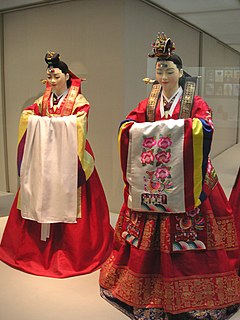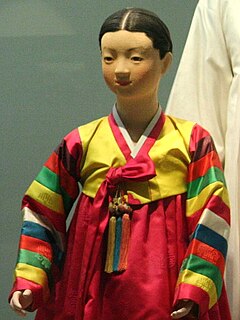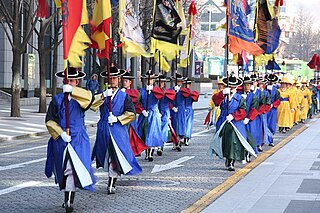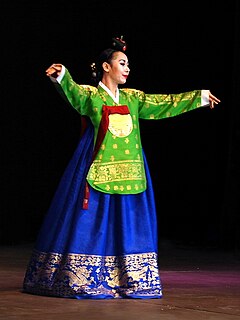
There are typically two types of clothing that the Japanese wear: the Japanese clothing, such as kimonos, and Western clothing. Japanese traditional fashion combines multiple styles that reflect early Japan's visual culture. It represents the culture's visible artistic and traditional values and joins them together to create a form of fashion recognizable to foreign cultures. The most well known form of Japanese traditional fashion is the kimono, but other types include the yukata and the hakama. The different styles have been produced, expressed, and transformed by artists well known in Japan, including fashion designers Issey Miyake, Yohji Yamamoto, and Rei Kawakubo. Their works have influenced numerous designers outside of the country that showcase their designs in fashion shows exposed internationally. From the intricate patterns to the layers of fabric, the essence of beauty that was found in traditional wear has influenced the modern fashion that is immersed in Japan's community on a daily basis, specially found in Tokyo, the capital of Japan.

A petticoat or underskirt is an article of clothing, a type of undergarment worn under a skirt or a dress. Its precise meaning varies over centuries and between countries.

A gat is a type of Korean traditional hat worn by men along with hanbok during the Joseon period. It is made from horsehair with a bamboo frame and is partly transparent in black color.

Undergarments are items of clothing worn beneath outer clothes, usually in direct contact with the skin, although they may comprise more than a single layer. They serve to keep outer garments from being soiled or damaged by bodily excretions, to lessen the friction of outerwear against the skin, to shape the body, and to provide concealment or support for parts of it. In cold weather, long underwear is sometimes worn to provide additional warmth. Special types of undergarments have religious significance. Some items of clothing are designed as undergarments, while others, such as T-shirts and certain types of shorts, are appropriate both as undergarments and as outer clothing. If made of suitable material or textile, some undergarments can serve as nightwear or swimsuits, and some are intended for sexual attraction or visual appeal.

An ayam is a Korean traditional winter cap mostly worn by women in the Joseon period for protection against the cold. It is also called aegeom which literally means "covering a forehead" in Korean. There is a historical record which mentions that officials in a low class called iseo wore ayam in the early Joseon period, so it was a unisex cap. However, it is not clear whether the shape at that time was identical to that of the later period. During the late Joseon period, an ayam was usually worn by female commoners. Especially in the western part of Korea, kisaeng commonly wore an ayam, and they were also worn as a simple formal headgear.

Hwagwan is a type of Korean coronet worn by women, traditionally for ceremonial occasions such as weddings. It is similar to the jokduri in shape and function, but the hwagan is more elaborate.

Hwarot is a type of traditional Korean clothing worn during the Goryeo and Joseon Dynasty by only royal women for ceremonial occasions and later by commoners for weddings. It is still worn during the p’yebaek phase of modern weddings. Before commoners wore hwarots, they wore wonsam due to the steep cost of a hwarot. It originated from the Kingdom of Khotan, Central Asia. The gown is typically worn with a jokduri or hwagwan, binyeo or daenggi, and yeongigonji, which is red and black makeup spots on the cheek and brow.

A gulle is a type of sseugae (쓰개), Korean traditional headgear, worn by children aged one year to five years old during the late Joseon period. It was mostly worn by young girls in the upper class for warmth and style. Gullae was usually made with silk and in summer, it was made with sa, a type of silk loosely woven.

A jobawi is a type of traditional Korean winter cap with earflaps which was worn by women and was made of silk. Since its first appearance in the late Joseon period, it has been widely worn as a substitute for the ayam. Although the jobawi was worn by the upper class as well as by commoners, it was mostly used by the yangban aristocracy of that time as a decorative headgear when they went out. In addition, the jobawi was worn not only as formal headgear, but also for special occasions. Even though a wearer was not in formal attire, if she wore a jobawi, the overall outfit could be considered as simple formal clothing.

The sagyusam is a type of po (포), or outer robe in hanbok, Korean traditional clothing, which was worn by young boys until they had a coming-of-age ceremony called gwallye (관례). The name was derived from the shape; the lower end of the garment is divided into four parts.

The saekdongot is a type of hanbok, Korean traditional clothing, with colorful stripes by patchworking. It began to be used for hanbok since the Goryeo period. The name literally means "many colored (saekdong) clothes (ot)" in Korean. Saekdong reminds one of the rainbow, which in turn evokes thoughts of children's pure dreams. It was usually worn by children from the age of one to seven year old. Such appliances of saekdong has been used throughout hanbok such as jeogori, magoja, durumagi and among other garments.

The jeonbok is a type of sleeveless long vest in hanbok, traditional Korean clothing, which was worn by military personnel. It does not have overlapped columns on the front side, and was worn over dongdari (동다리).
Durumagi is a variety of po, or overcoat in hanbok, the Korean traditional garment. It is usually the topmost layer of clothing that is worn over jeogori (jacket) and baji (pants). Durumagi means "closed all around", and is also known as jumagui, juchaui or juui. Durumagi is worn not only to fend off the cold, but also for ceremonial purposes.

Kkachi durumagi is a children's colorful overcoat in hanbok, traditional Korean clothing, which was worn on Seollal, New Year's Day in the Lunar calendar. It was worn mostly by young boys and literally means "a magpie's overcoat". The clothes is also called obangjang durumagi which denotes "an overcoat of five directions". It was worn over jeogori and jokki while the wearer could put jeonbok over it. Kkachi durumagi was also worn along with headgear such as bokgeon, hogeon for young boys or gulle for young girls.

Dang'ui is a type of upper garment for women in hanbok, Korean traditional clothing, which was worn for ceremonial occasions during the Joseon Dynasty. It was worn as a simple official outfit or for small national ceremonies while court ladies wore it as a daily garment. Dangui was also called dang-jeogori (당저고리), dang-jeoksam (당적삼), or dang-hansam (당한삼).

The magoja is a type of long jacket worn with hanbok, the traditional clothing of Korea, and is usually worn on top of the jeogori. It is also called magwae and while it was originally a male garment, it is now considered a unisex article of clothing. The magoja was originally a Manchu style of clothing, but was introduced after Heungseon Daewongun, father of King Gojong, returned from political exile in Manchuria in 1887. The magoja is derived from the magwae that he wore at that time to protect against the cold weather of the region. Due to its warmth and the fact that it's easy to wear, the magoja's popularity spread throughout Korea. It is also called "deot jeogori".

The thong is a garment generally worn as either underwear or as a swimsuit in some countries. It may also be worn for traditional ceremonies or competitions.





















